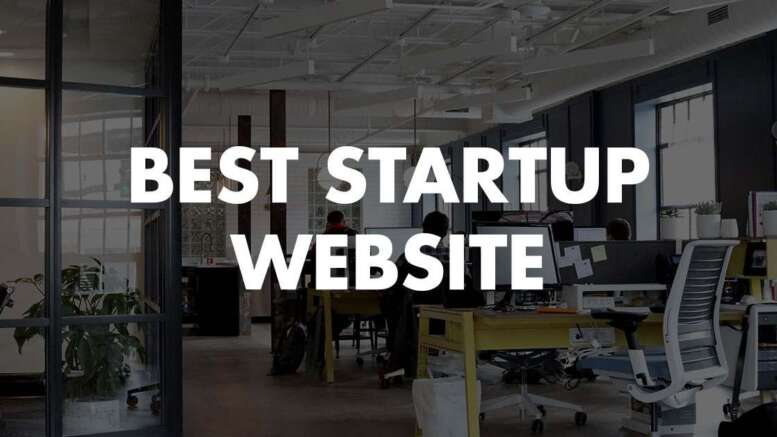A website is a great way to make your business known to the world, especially in this day and age where technology is such an essential tool.
If you’re looking to build your first website, you may find yourself in a pinch—it may prove more difficult than your previously thought. But worry not! An expert web designer for startups can provide assistance. They can build a website for you so you can focus your energy on other areas of your business.
Read on to discover the best practices to follow when building your startup website from scratch.
1. Pick a Good Domain Name
The domain name is how people make contact with you online. So it’s essential to make an excellent first impression. A good domain name is also useful for search engine optimization (SEO). That means it has the potential to rank higher in search results.
Here are Some Ideas For Coming Up With a Good Domain Name:
- Choose an easy-to-spell name—try to use straightforward words that define your business.
- Keep it short—people don’t like to type a lot, and it’s easier to remember a short name.
- Use an appropriate domain extension—domains with .com have the best credibility. Sometimes, it can be more appropriate to use .gov, .org, or .edu.
- Use a broad address that allows you to expand in the future.
- Research the availability of your chosen domain name.
- Try to pay as little as possible for it if you can’t find it for free.
2. Research Web Hosting and Tech Support Before Purchase
Website hosting providers are IT companies that provide IT resources and services, allowing people or companies to host their websites and databases online. Users can only see your website and domain name if it’s connected to a hosting provider.
Hosting a domain name and a website cost money. You can find monthly plans running from $2 to $100 or more. The price depends on the technology you need. Remember that yearly plans can get you discounts, so be on the lookout for those.
3. Use the Best Content Management System
A content management system (CMS) is a piece of software you use to manage a website. There are different content management platforms you can choose depending on your needs. Here are a few examples:
- WordPress— The most popular and widely-used CMS. It is a good choice for most businesses because it has a large community and extensive plugin support. Unfortunately, it often becomes a target for hacks.
- Drupal— This platform is more secure than WordPress but lacks theme and plugin options.
- Joomla!—It’s a free, open–source CMS platform that allows you to organize and publish content as you see fit.
- Squarespace—It’s a monthly or annual subscription service that provides hosting and website-building services, allowing subscribers to use pre-built website templates to simplify website and blog creation.
4. Be Careful With the E-Commerce Platform Used
If you’re in the business of selling goods and services through a website, you need to use the appropriate software. Even if you’re not selling anything right now, you could go that route in the future.
So if you allow users to make transactions online through your website, you need an e-commerce platform.
Here are Some Popular Ones:
- Shopify—This cloud-based platform lets you build an online store from scratch. That includes managing products, payments, inventory, and shipping.
- Wix—It has a very user-friendly interface, but you must subscribe to Wix and Shopify to use it.
- GoDaddy—It’s a subscription platform that allows anyone to launch an online shop.
5. Create a Memorable Web User Interface
Focus on offering your users a positive experience. It will likely lead to good results. You can focus on highlighting your brand identity and incorporating it into your website. That means using readable fonts, excellent graphics, logos, and mottos.
Optimize the content of your graphic to load fast on Google. When your website is too slow, people won’t hang around and wait for it to load, and Google can penalize it by showing it much lower on searches.
It’s essential to focus on an intuitive navigation system with natural progression and give your prospective visitors quick access to contact information.
6. Optimize Your Website for Search Engines
Apply SEO standards to your website to ensure your pages are indexed in search engines. Your website will compete with other online content that has the same information as you.
SEO Practices Include:
- Fast loading speeds
- Keyword research
- Keyword implementation
- SSL certificates
- Mobile-friendly website
- High-quality backlinks
- Positive online reviews
- Social media presence.
7. Create a Content Publishing Schedule
Evergreen articles and static page content are essential because they have a higher chance of bringing visitors to your website all year round. This is why you should create a content plan to build an online presence and refine your marketing goals.
Frequently publishing high-quality content on your website keeps you relevant, while external links help you rank highly in search engine results and bring people to your website. In turn, it encourages visitors to return to your website.
Spruce your website with some testimonials, too. Ask your customers for a review and post it on your website. It will make you more attractive to new businesses.
Of course, always ensure you’re using an appropriate tone of voice. Work your brand voice in all written content.
Conclusion
Now that you’ve reached the end of the article, creating a good startup website might not seem as straightforward as you first imagined. However, if you follow our tips, your startup will have a great chance of flourishing in the online market.


Be the first to comment on "7 Best Practices for Designing Your Startup Website"